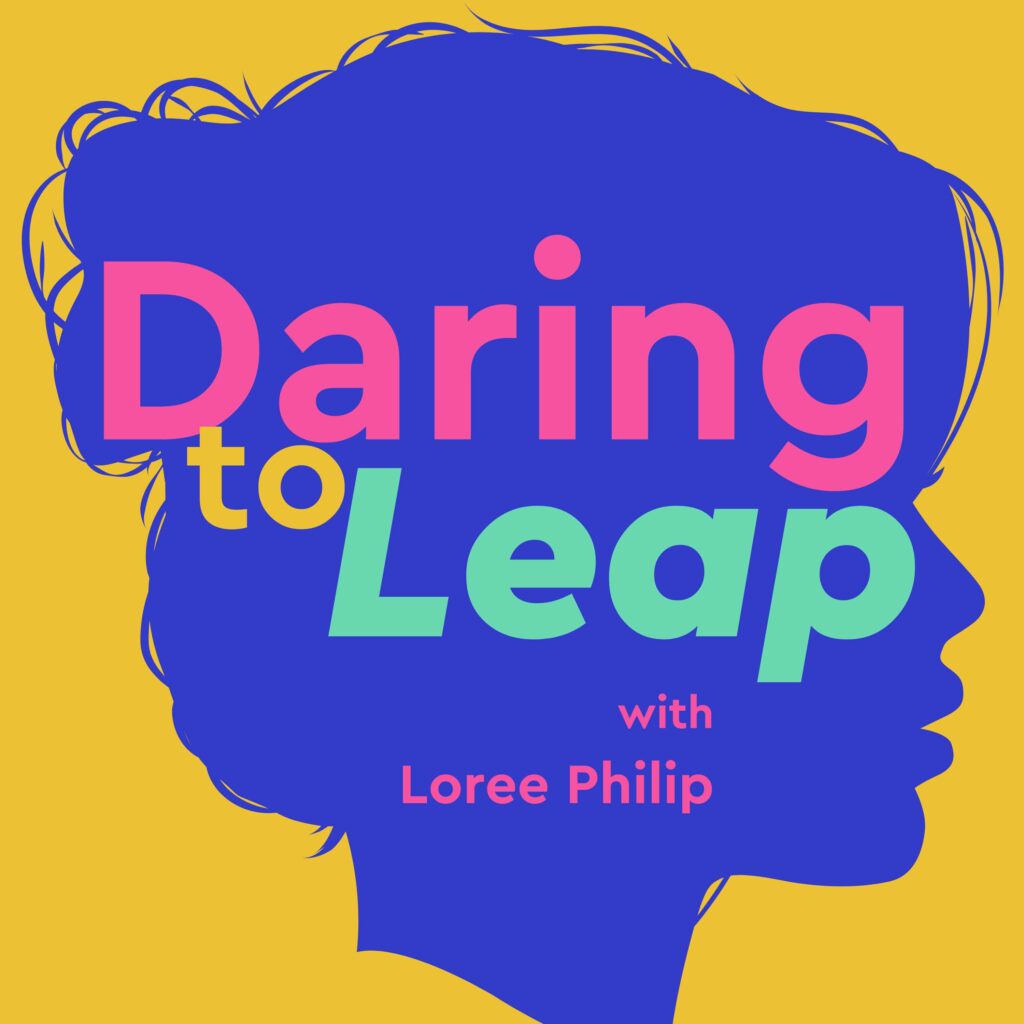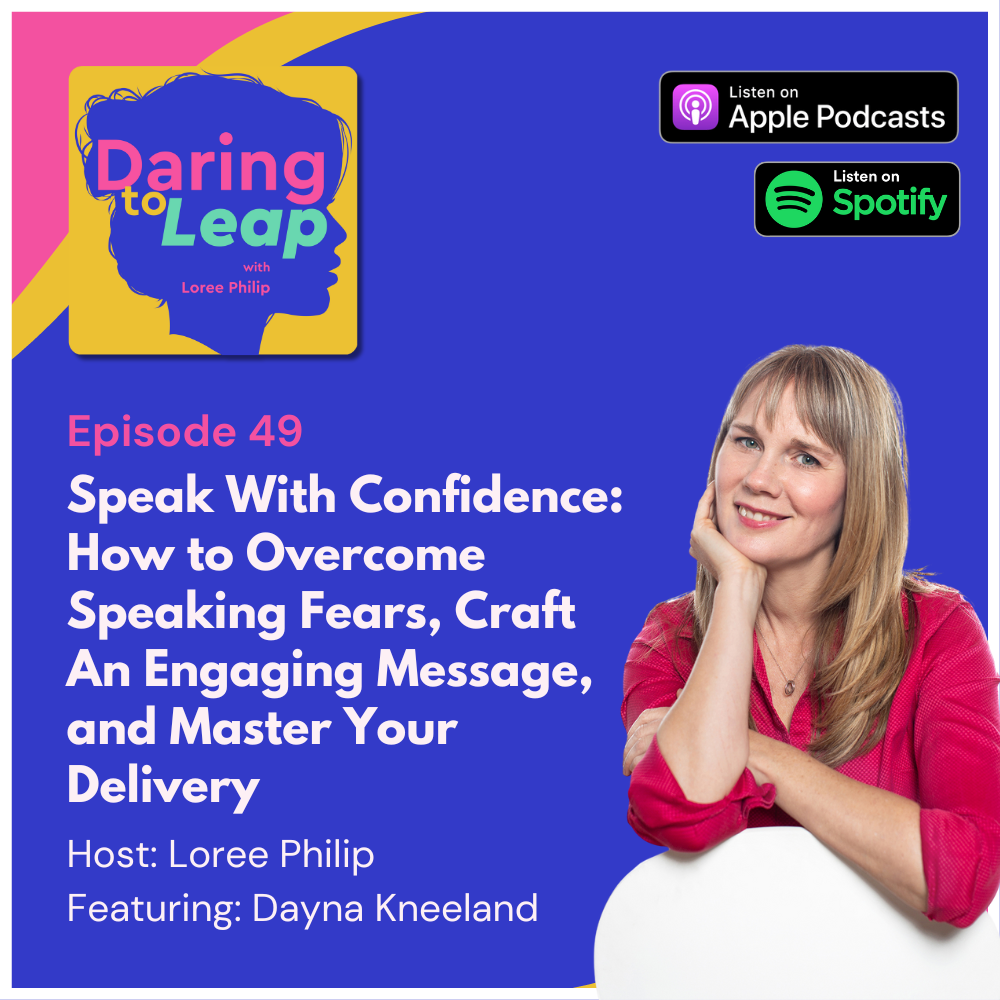Would you like to express your ideas more confidently and effectively? Want to know the expert techniques that could transform your communication and speaking skills?
This week on Daring to Leap, Loree Philip speaks with special guest, Dayna Kneeland – a renowned public speaking and storytelling coach. Dana generously shares her insights on how to get past public speaking fears, communicate in professional environments effectively, and speak with confidence.
By tuning in to this episode you will:
- Learn how to captivate your audience and stand confident in your delivery.
- Understand the power of storytelling in captivating listeners and activating their brain, fostering a stronger connection with the audience.
- Understand the techniques can help you shift focus from yourself to your audience, cleverly reducing anxiety and enhancing your stage presence.
- Learn how to structure your message for maximum impact to captivate your audience.
- Get expert techniques for the effective delivery of a message
- Learn effective communication strategies that suit your personal strengths and attributes.
Don’t miss out on this chance to transform how you communicate. Click to play now and begin your own journey into persuasive and confident public speaking!
Connect with Dana:
Dayna’s free “Speak with Confidence Assessment: http://subscribepage.io/speakwithconfidence
More from Host, Loree Philip:
GET YOUR FREEBIE! Career Energy Boost GUIDE: 5 Strategies To Add Life And Vibrancy To Your Career – Grab your copy HERE.
Are you ready to shed self-doubt and fears that are keeping you from taking your leap?
Let’s chat! Book a FREE Confidence to Leap call with Loree Philip: HERE
Connect with Loree:
Instagram – @loreephilip
LinkedIn – @loree-philip

